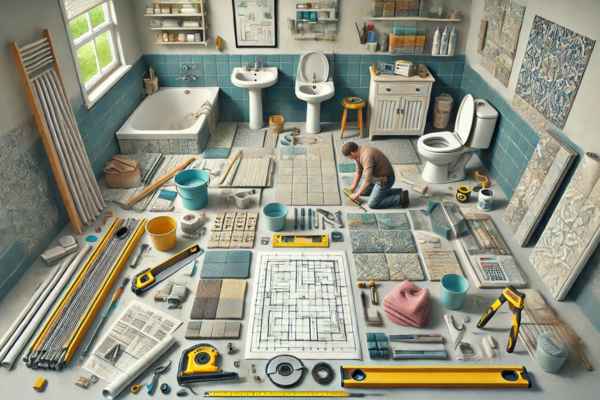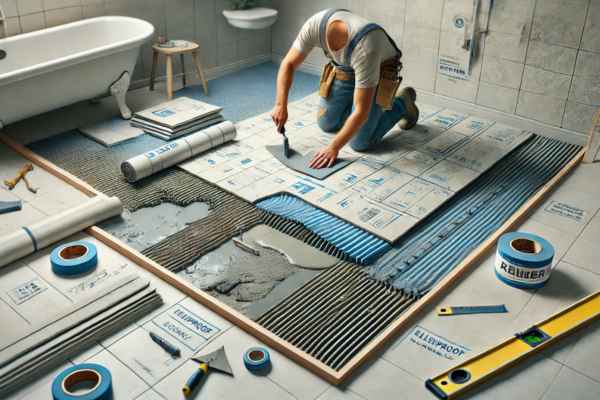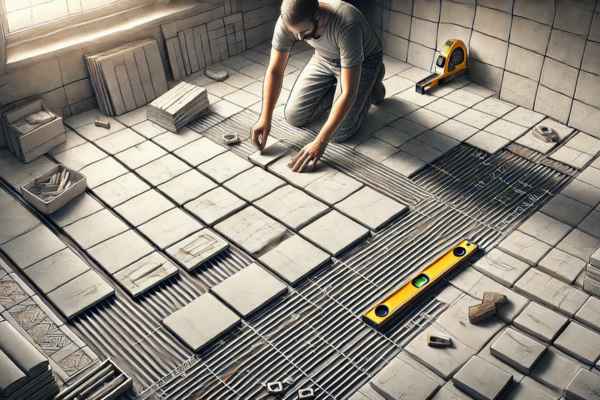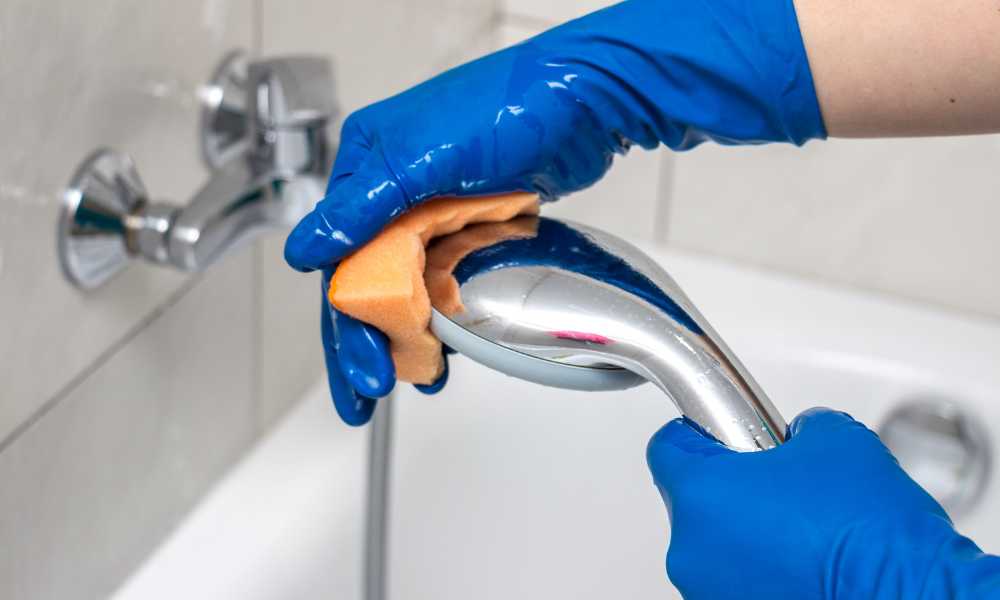Retiling a bathroom floor might also appear to be a frightening enterprise, however with the right approach, it turns into an achievable and worthwhile DIY challenge. Whether you’re revamping an previous design, solving damaged tiles, or virtually yearning a fresh appearance, mastering a way to retile a toilet ground will breathe new lifestyles into your area. Properly hooked up tiles now not simplest enhance aesthetics however additionally make contributions to a water-resistant, durable, and clean-to-easy floor. This comprehensive guide will stroll you thru every degree of the technique, from guidance to installation and finishing touches. By following those steps, you’ll remodel your bathroom ground with self belief and precision.
Preparing for the Project

Before embarking on your tiling journey, training is important. Start via amassing the essential substances and tools. You’ll want:
- Tiles of your choice
- Tile adhesive (thin-set mortar)
- Tile spacers
- Notched trowel
- Grout and grout float
- Tile cutter or wet saw
- Leveling tools
- Sponge and bucket for clean-up
Next, degree your toilet floor to determine the quantity of tile required. To keep away from shortages, usually buy more tiles—generally 10-15% greater—to account for breakage and destiny upkeep. Choosing the right tile is similarly crucial. Porcelain and ceramic tiles are famous for his or her durability and water resistance. Consider slip-resistant textures for protection, especially in a high-moisture surroundings like a toilet. Once you’ve accumulated materials, clear out the rest room. Remove all furniture, rugs, and furniture that can obstruct your paintings location. If the rest room is within the way, shutting off the water deliver and quickly uninstalling it’ll offer better access to the floor.
Removing the Old Bathroom Floor Tiles

Eliminating the existing tile is a labor-in depth method, however endurance and method make it potential. Start by protecting your self with protection gear—gloves, safety goggles, and a dust masks—to protect in opposition to flying particles. Use a hammer and chisel to interrupt up the primary tile. Once removed, a pry bar can assist in lifting extra tiles. If the tiles are stubbornly adhered to the ground, a strength scraper or rotary tool may be important to loosen them efficiently. After tile removal, you’ll in all likelihood encounter residual adhesive. This must be very well scraped off to create a smooth floor. Inspect the subfloor for damage—any cracks, rot, or unevenness ought to be addressed earlier than intending. If the subfloor is compromised, changing it with cement backer board is beneficial. This offers a strong basis for the new tiles and forestalls moisture-associated troubles down the road.
Prepping the Surface for New Tiles

A well prepped floor is the important thing to an extended-lasting tile set up. Begin by way of ensuring the subfloor is level—high spots can be sanded down, even as low regions need to be packed with a leveling compound. Waterproofing is another vital step, mainly in a toilet where moisture is accepted. Applying a water-proof membrane or using a moisture-resistant underlayment will decorate the durability of your new tile floor. For greater reinforcement, installing a cement backer board gives a strong base for the tile. Secure it to the subfloor with screws, and seal the joints with skinny-set mortar and fiberglass mesh tape. Allow the whole thing to dry very well earlier than moving to the following segment. Rushing this process ought to result in shifting tiles and choppy grout traces later.
Laying Out the New Tiles

Before applying adhesive, dry-match your tiles to determine the high-quality layout. Start inside the middle of the room and work outward, using tile spacers to maintain uniform gaps. A nicely-planned layout prevents awkwardly small tile pieces alongside the walls and guarantees a symmetrical appearance. If vital, alter the start line barely to gain higher visible balance. Marking tips at the ground with chalk traces facilitates maintain directly rows, decreasing the chance of misalignment. Once happy with the layout, carefully do away with the tiles and prepare for installation.
Installing the New Tiles Like a Pro

Applying the adhesive is a essential step that determines the stability of your tiles. Use a notched trowel to unfold a skinny, even layer of skinny-set mortar over a small segment of the floor—working in sections prevents the adhesive from drying too quick. Press every tile firmly into region, giving it a slight twist to ensure proper adhesion. Use tile spacers to hold even gaps for grout utility. Work methodically, checking alignment regularly with a stage. For regions that require tile slicing, use a tile cutter for instantly cuts or a wet noticed for more difficult shapes. Precision right here is critical for a refined, expert finish. Once all tiles are hooked up, permit the adhesive to set for at least 24 hours before intending to grouting.
Grouting and Sealing the Tiles
After the adhesive has cured, it’s time to fill the gaps with grout. Select a grout coloration that enhances your tile—contrasting grout emphasizes tile form, whilst matching grout creates a unbroken appearance. Using a rubber waft, press the grout into the areas between tiles, ensuring all gaps are absolutely stuffed. Wipe away extra grout with a damp sponge before it hardens. Once the grout has dried (usually 24-48 hours), apply a grout sealer to shield it from moisture, stains, and mold. This step substantially enhances the sturdiness of your toilet ground.
Final Touches and Clean-Up
To reap a expert finish, eliminate any last grout haze with a smooth, damp cloth. Reinstall any fixtures eliminated for the duration of preparation, along with the bathroom or baseboards. If the ground meets a tub or bathe, applying a bead of silicone caulk along the edge prevents water from seeping below the tiles. After a final inspection, your newly tiled lavatory ground is ready to be used. Avoid heavy foot site visitors for at the least 48 hours to ensure the whole thing units properly.
Conclusion
Retiling a toilet ground requires effort, however the transformation is nicely worth it. A properly-mounted tile ground complements each capability and aesthetic attraction, growing your own home’s fee and offering a sparkling, modern-day appearance. By following those steps, you’ve won the abilities to address destiny tiling initiatives with confidence. With the right tools, patience, and a methodical approach, you’ve correctly mastered the way to retile a bathroom floor like a pro. Now, step again and appreciate your paintings—you’ve earned it!


